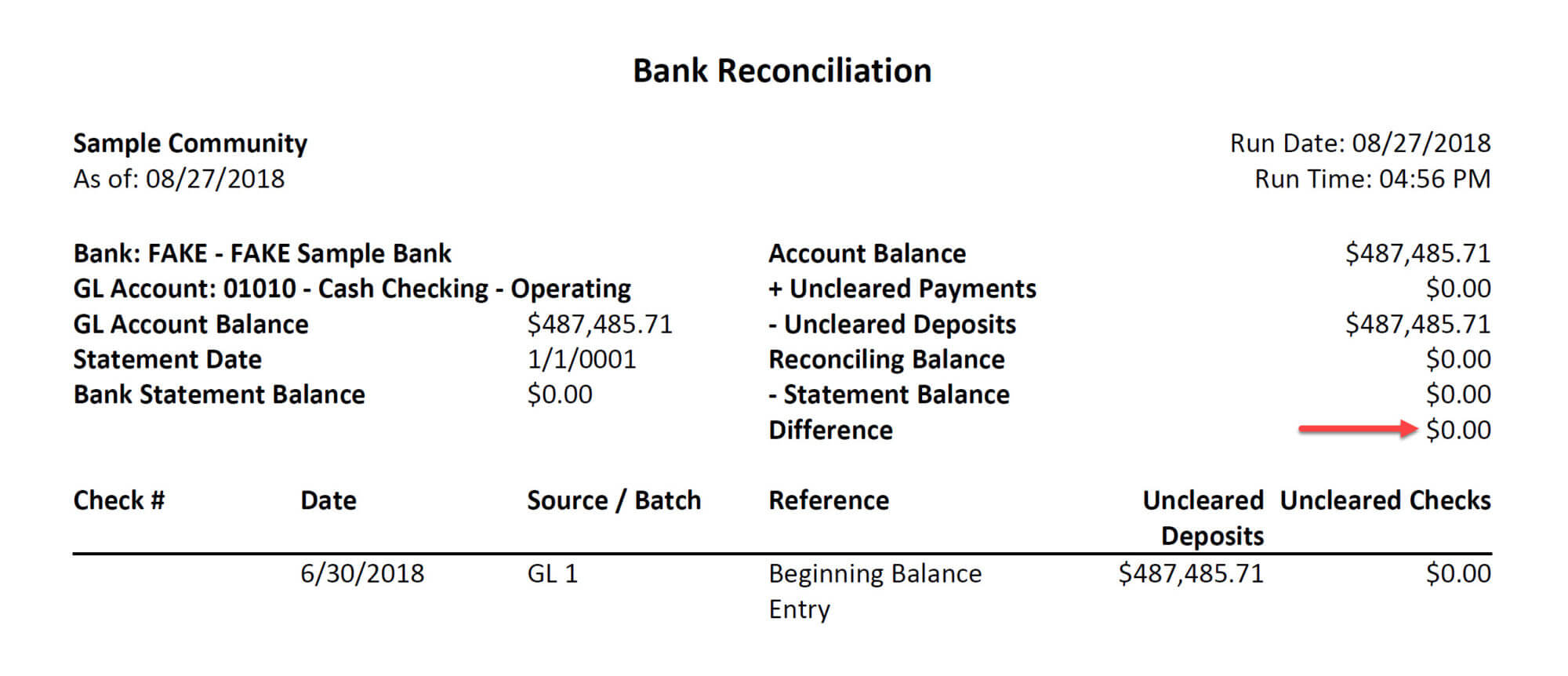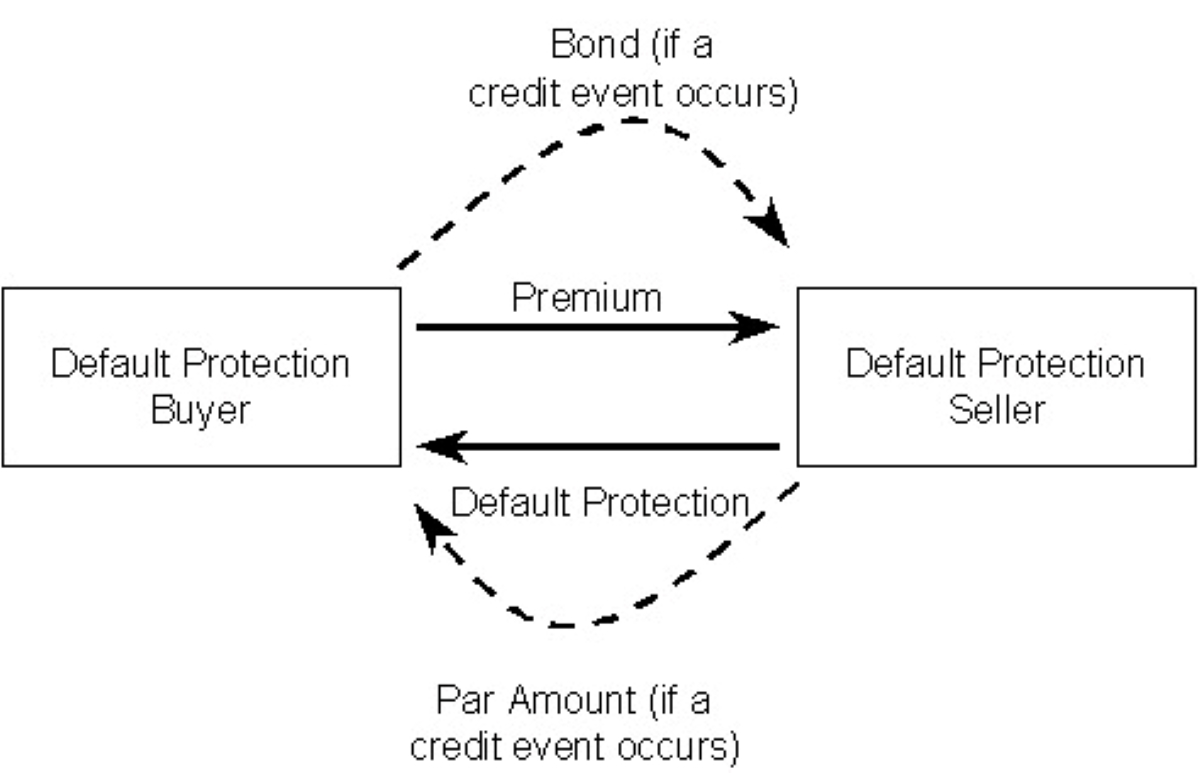Home>Finance>How Is Inventory Classified In The Financial Statements


Finance
How Is Inventory Classified In The Financial Statements
Published: December 23, 2023
Learn how inventory is classified in the financial statements and its impact on the bottom line. Enhance your understanding of finance with this comprehensive guide.
(Many of the links in this article redirect to a specific reviewed product. Your purchase of these products through affiliate links helps to generate commission for LiveWell, at no extra cost. Learn more)
Table of Contents
- Introduction
- Definition of Inventory
- Importance of Classifying Inventory in Financial Statements
- Current Assets
- Non-Current Assets
- Inventory as a Current Asset
- Inventory Classification Methods
- Cost of Goods Sold (COGS)
- Inventory Valuation Methods
- Specific Identification Method
- First-In, First-Out (FIFO) Method
- Last-In, First-Out (LIFO) Method
- Weighted Average Cost Method
- Lower of Cost or Market (LCM) Method
- Disclosure Requirements for Inventory
- Conclusion
Introduction
Inventory is a crucial component of a company’s operations and financial health. It represents the goods and materials a business holds for sale, as well as those that are in the process of being produced. Properly classifying inventory in a company’s financial statements is essential for providing accurate and transparent information to stakeholders, including investors, lenders, and potential business partners.
Accurate classification of inventory allows businesses to assess the value of their assets and determine the cost of goods sold (COGS). It also enables companies to make informed decisions about production, purchasing, and sales strategies. Failure to classify inventory correctly can lead to misleading financial statements and can negatively impact a company’s profitability, liquidity, and overall financial performance.
In this article, we will explore the different methods and principles used to classify inventory in the financial statements, including the various types of inventory and their categorization as current or non-current assets. We will also discuss inventory valuation methods and the importance of disclosure requirements.
Understanding how inventory is classified and valued is crucial not only for business owners and managers but also for investors and creditors who rely on financial statements to assess a company’s financial health and performance.
Definition of Inventory
Inventory refers to the goods, materials, or merchandise that a business holds for the purpose of sale or for use in production. It includes raw materials, work in progress, and finished goods. Essentially, inventory represents the company’s stock of products that are yet to be sold or used in the production process.
There are three main types of inventory:
- Raw Materials: These are the basic materials that a company uses to produce its products. Examples include wood for furniture manufacturers or fabric for clothing manufacturers.
- Work in Progress: Work in progress inventory includes partially completed products that are still undergoing manufacturing processes.
- Finished Goods: These are the completed products that are ready to be sold to customers.
Inventory is a vital part of a company’s operations, as it represents both an investment of resources and a potential source of revenue. In order to effectively manage inventory, businesses need to track and control their inventory levels to ensure they have enough stock to meet customer demand without excessive carrying costs or risk of obsolescence.
Properly classifying inventory is essential for financial reporting and analysis purposes. It allows businesses to accurately present the value of their inventory on their balance sheet and determines the cost of goods sold (COGS) on their income statement. This information is critical for assessing a company’s profitability and operational efficiency.
It is important to note that inventory can vary significantly depending on the nature of the business. For a manufacturing company, inventory may consist of raw materials, work in progress, and finished goods. For a retail company, inventory typically includes finished goods that are ready for sale. Service-based businesses may not have traditional inventory in the same sense, but they may still have supplies or materials that are necessary for providing their services.
Overall, inventory plays a fundamental role in the financial management of a business, and understanding its definition and classification is essential for accurate financial reporting and decision-making.
Importance of Classifying Inventory in Financial Statements
The classification of inventory in financial statements is of utmost importance as it provides valuable information about a company’s financial health and performance. Properly classifying inventory allows businesses to present accurate and transparent information to stakeholders, including investors, lenders, and potential business partners. Here are some key reasons why classifying inventory in financial statements is crucial:
- Accurate Asset Valuation: Classifying inventory appropriately helps determine the value of a company’s assets. It ensures that inventory is accurately represented on the balance sheet, reflecting its true worth. This information is important for assessing a company’s financial position and determining its ability to meet financial obligations.
- Informed Decision-Making: Proper classification provides meaningful insights to management for making informed decisions. Classifying inventory by type, such as raw materials, work in progress, or finished goods, allows businesses to assess their manufacturing capabilities, identify production bottlenecks, and plan for future inventory needs. This enables management to optimize production processes, reduce wastage, and streamline operations.
- Cost of Goods Sold Calculation: Accurate classification is essential to calculate the cost of goods sold (COGS) accurately. COGS represents the direct costs associated with the production or acquisition of goods sold by a company. It is a core component of the income statement and plays a major role in determining a company’s profitability. Properly classifying inventory ensures that the COGS figure reflects the true cost of producing or acquiring the goods sold during a specific accounting period.
- Gross Margin Analysis: Gross margin is a key financial metric that indicates a company’s profitability and operating efficiency. It is calculated by subtracting COGS from sales revenue and is expressed as a percentage. By accurately classifying inventory, companies obtain a more accurate estimation of their gross margin, enabling them to evaluate their pricing strategy, cost management efforts, and overall financial performance.
- Financial Reporting Compliance: Classifying inventory correctly is crucial for fulfilling financial reporting requirements, including Generally Accepted Accounting Principles (GAAP) or International Financial Reporting Standards (IFRS). The proper classification of inventory ensures compliance with these accounting standards, which enhances the credibility and transparency of a company’s financial statements.
In essence, the classification of inventory in financial statements provides valuable insights into a company’s financial position, profitability, and operational efficiency. Accurate classification enhances decision-making processes, helps in compliance with accounting standards, and allows stakeholders to assess a company’s financial health with confidence.
Current Assets
Current assets are the portion of a company’s balance sheet that represents resources that are expected to be converted into cash or used up within one year or the normal operating cycle, whichever is longer. These assets are crucial for the day-to-day operations of a business and its ability to meet short-term financial obligations. Current assets are typically listed in order of liquidity, with the most liquid assets appearing first.
Current assets commonly include the following:
- Cash and Cash Equivalents: This includes cash on hand, cash in bank accounts, and short-term investments that can be readily converted into cash within a short period of time, usually within three months.
- Accounts Receivable: This represents the money owed to the company by its customers for goods sold or services rendered on credit. Accounts receivable are usually collected within a short period of time, typically 30 to 90 days.
- Inventory: Inventory is considered a current asset as it is expected to be sold or used up within one year. It includes raw materials, work in progress, and finished goods held by a company.
- Prepaid Expenses: These are expenses paid in advance, such as insurance premiums or rent. Prepaid expenses are classified as current assets because they will be used up within the next year or operating cycle.
- Short-Term Investments: These include investments in securities, such as stocks, bonds, or mutual funds, that are expected to be converted into cash within a short period of time, typically within one year.
Current assets play a crucial role in assessing a company’s liquidity and short-term financial health. They provide a measure of a company’s ability to meet its short-term obligations and fund its daily operational needs. Current assets are compared to current liabilities to calculate the current ratio, which is a key indicator of a company’s liquidity position. A higher current ratio indicates better short-term solvency.
Inventory is a significant component of current assets for businesses involved in production or retail. It represents the value of products or materials that are held for sale or used in the production process. Proper classification and valuation of inventory are essential for presenting accurate financial statements and assessing a company’s financial position.
It is important for companies to effectively manage their current assets to optimize working capital and ensure sufficient liquidity to meet short-term obligations. This involves balancing inventory levels, managing receivables, and monitoring cash flow to maintain a healthy and efficient operation.
In summary, current assets are the resources that can be easily converted into cash within a year or the normal operating cycle. Inventory is a key component of current assets and plays a crucial role in a company’s ability to generate revenue and meet short-term financial obligations.
Non-Current Assets
Non-current assets, also known as long-term assets, are the resources that a company owns or controls that are expected to provide economic benefits beyond the next year or the normal operating cycle. Unlike current assets, which are expected to be converted into cash within a short period of time, non-current assets are held for a longer duration and are not easily converted into cash. These assets are typically used in the company’s operations to generate revenue over the long term.
Non-current assets commonly include the following:
- Property, Plant, and Equipment (PP&E): This category includes land, buildings, machinery, equipment, vehicles, and other physical assets used in the production or operation of a business. PP&E assets are typically expected to have a useful life of more than one year and are recorded at their acquisition cost less accumulated depreciation.
- Intangible Assets: These assets lack physical substance but have value to the company. Examples of intangible assets include patents, trademarks, copyrights, brand value, customer relationships, and software. Intangible assets are typically recorded at their acquisition cost and are amortized over their useful life.
- Investments: Non-current assets may include long-term investments in the form of equity or debt securities of other companies. These investments are not intended to be sold or converted to cash in the short term. They are reported on the balance sheet at their fair value or cost.
- Goodwill: Goodwill represents the value of a company’s reputation, customer base, brand recognition, and other non-physical assets that arise from the acquisition of another company. Goodwill is recorded when a company acquires another company for a price higher than the fair value of its net assets.
- Deferred Charges: Deferred charges include costs that are paid in advance but will be expensed over a period longer than one year. Examples include prepayments for insurance premiums, long-term leases, or advertising expenses.
Non-current assets play a critical role in a company’s long-term growth and success. They represent the investments made by a company to support its operations, expand its capabilities, and generate future cash flows. Proper classification and valuation of non-current assets are crucial for providing a clear picture of a company’s financial position and its ability to generate long-term value.
Non-current assets are usually reported on the balance sheet separately from current assets. This separation allows stakeholders to assess a company’s overall asset base and evaluate its long-term investment strategy. Evaluating the composition and value of non-current assets provides insights into a company’s ability to sustain its operations, generate future earnings, and create shareholder value.
It is important for companies to manage their non-current assets effectively, including conducting regular assessments of their value, ensuring proper maintenance of physical assets, and evaluating the potential impairment of intangible assets. Timely and accurate reporting of non-current assets helps stakeholders make informed decisions and assess a company’s long-term financial health and performance.
In summary, non-current assets represent the long-term investments and resources of a company that are expected to provide economic benefits beyond the next year. Proper classification and valuation of non-current assets are essential for accurately reflecting a company’s financial position and its ability to generate long-term value.
Inventory as a Current Asset
Inventory is classified as a current asset on a company’s balance sheet because it is expected to be sold, used, or converted into cash within one year or the normal operating cycle, whichever is longer. As a current asset, inventory represents a company’s stock of products, raw materials, and work in progress that are held for sale or used in the production process.
Inventory plays a crucial role in a company’s overall operations and financial health. It serves as a significant source of revenue generation and directly impacts a company’s profitability. Here are a few key reasons why inventory is classified as a current asset:
- Ready for Sale: Inventory represents products that are ready to be sold to customers. These can include finished goods in a retail store or items in a warehouse waiting to be shipped. These goods are expected to be sold within the next year, generating revenue for the company.
- Used in Production: Inventory also includes raw materials and work in progress that are used in the manufacturing or production process. These items are transformed into finished goods and eventually sold to customers. As they are part of the production cycle, they are classified as current assets since they are expected to be used or sold within one year.
- Short-Term Conversion to Cash: The classification of inventory as a current asset is also based on the expectation that it can be converted into cash within a short period. For example, a company can sell its inventory to generate cash or use it as collateral for securing short-term loans.
- Matching Principle: The matching principle in accounting requires that the cost of inventory be matched with the revenue generated when the goods are sold. By classifying inventory as a current asset, companies align the recognition of inventory-related costs with the associated revenue in the same accounting period.
Proper management of inventory is essential for businesses to maintain optimal stock levels, avoid stockouts, and minimize carrying costs. This includes tracking inventory turnover, managing stock replenishment, and monitoring obsolescence and spoilage risks.
It is important to note that the classification of inventory as a current asset may vary in certain circumstances. For instance, in industries with longer production cycles, inventory that takes longer than one year to be converted into cash or sold may be classified as a non-current asset.
Overall, inventory is a vital component of a company’s operations and financial statements. As a current asset, its accurate valuation and classification are crucial for presenting a true reflection of a company’s financial position and its ability to generate revenue in the near term.
Inventory Classification Methods
Inventory classification refers to the process of categorizing inventory based on various criteria for effective management and financial reporting. The classification methods used can vary depending on the nature of the business and its specific inventory management needs. Here are some common inventory classification methods:
- ABC Classification: This method categorizes inventory based on its value or importance to a company. ABC classification separates inventory into three categories: A, B, and C. Category A represents high-value items that contribute a significant portion of the overall inventory value but typically constitute a smaller percentage of total stock. Category B includes moderately valued items, while Category C consists of low-value items that make up a larger percentage of total stock but contribute a lower overall value. The ABC classification method allows businesses to focus their attention on managing and controlling high-value items more closely.
- Fast-Moving/Slow-Moving Classification: This method classifies inventory based on its rate of turnover or movement. Fast-moving inventory refers to items that are sold or used up quickly, usually within a short period of time. Slow-moving inventory, on the other hand, includes items that have a longer shelf life or remain in stock for an extended period. This classification is beneficial for inventory management, as it helps businesses allocate resources and prioritize the replenishment of fast-moving items to prevent stockouts and minimize holding costs for slow-moving items.
- Perishable/Non-Perishable Classification: This method categorizes inventory based on its perishability. Perishable inventory includes items with a limited shelf life or a specific expiration date, such as fresh produce or certain pharmaceutical products. Non-perishable inventory comprises items that do not have time constraints and can be stored for extended periods without significant degradation or value loss. This classification is crucial for businesses that deal with perishable goods, as it helps prevent losses due to spoilage and ensures proper inventory rotation.
- Seasonal Classification: Seasonal classification is used to categorize inventory based on its demand patterns throughout different seasons or periods. This method helps businesses identify and manage inventory fluctuations and allocate resources accordingly. It enables effective planning and forecasting, allowing companies to adjust production and inventory levels to meet anticipated seasonal demand while avoiding overstocking or stockouts during off-season periods.
- Serialized/Non-Serialized Classification: Serialized inventory classification involves assigning unique serial numbers or tracking codes to individual items within the inventory. This method is commonly used for high-value items, such as electronics or luxury goods, to facilitate tracking, warranty management, and anti-counterfeit measures. Non-serialized inventory, on the other hand, does not require individual item tracking and is managed as a group or batch.
It is important for businesses to select the most appropriate inventory classification method or combination of methods based on their specific needs and industry requirements. Effective inventory classification enables businesses to streamline operations, optimize stock levels, and make informed decisions regarding pricing, procurement, and overall inventory management.
Cost of Goods Sold (COGS)
The cost of goods sold (COGS) is an important financial metric that represents the direct costs associated with the production or acquisition of goods sold by a company. It is an essential component of the income statement and is subtracted from the company’s revenue to calculate gross profit. COGS reflects the expenses directly tied to making or acquiring the products that were sold during a specific accounting period.
The calculation of COGS includes the following cost elements:
- Direct Material Costs: This includes the cost of raw materials and components used to manufacture or produce the goods sold. It represents the expenses incurred in acquiring the materials necessary for the final product.
- Direct Labor Costs: Direct labor costs encompass the wages, salaries, and benefits of the employees directly involved in the manufacturing or production process. It includes the cost of labor required to convert raw materials into finished goods.
- Manufacturing Overhead Costs: Manufacturing overhead costs include indirect costs incurred during the production process. This includes expenses such as factory rent, utilities, depreciation of machinery, maintenance, and other indirect labor costs. These costs are allocated to the goods based on factors like machine hours or labor hours.
- Beginning and Ending Inventory: COGS is also influenced by changes in inventory levels throughout the accounting period. The cost of goods sold is calculated by subtracting the value of ending inventory from the sum of the beginning inventory and purchases made during the period. The difference represents the cost of the goods that were sold.
The calculation of COGS is essential for financial reporting as it directly impacts a company’s profitability. By deducting the cost of goods sold from revenue, the gross profit is determined. Gross profit reflects the amount of profit generated from the sale of goods before considering other operating expenses such as selling, general, and administrative expenses.
Accurate determination of COGS is crucial for assessing the efficiency and profitability of a company’s operations. It enables businesses to analyze gross profit margins, identify cost variances, evaluate pricing strategies, and make informed decisions regarding production volumes and pricing adjustments.
Various inventory valuation methods, such as FIFO (First-In, First-Out), LIFO (Last-In, First-Out), and weighted average cost, are used to calculate COGS and allocate the costs to the goods sold. Each method has its own impact on COGS, inventory valuation, and tax considerations. It is important for businesses to select an appropriate and consistent inventory valuation method that aligns with their operations and financial reporting requirements.
In summary, COGS is a critical financial metric that represents the direct costs associated with the production or acquisition of goods sold by a company. Accurate calculation of COGS is essential for evaluating profitability and making informed decisions regarding pricing, production, and inventory management.
Inventory Valuation Methods
Inventory valuation methods refer to the techniques used to assign a value to the inventory held by a company. The choice of inventory valuation method has a significant impact on the calculation of cost of goods sold (COGS), the value of ending inventory, and ultimately, a company’s financial statements. Here are some common inventory valuation methods:
- Specific Identification Method: This method requires tracking the cost of each individual item in the inventory. It is typically used for high-value or unique items. With specific identification, the actual cost of each item sold is matched with its corresponding revenue. While this method provides the most precise valuation, it is also the most time-consuming and may not be practical for large inventories or items with similar characteristics.
- First-In, First-Out (FIFO) Method: The FIFO method assumes that the first items purchased or produced are the first ones sold. Under FIFO, the cost of goods sold is based on the cost of the oldest items in the inventory, while the value of the ending inventory is based on the cost of the most recently acquired items. This method aligns with the natural flow of inventory and is commonly used when inventory turnover reflects the actual physical flow of goods.
- Last-In, First-Out (LIFO) Method: The LIFO method assumes that the last items purchased or produced are the first ones sold. With LIFO, the cost of goods sold is based on the cost of the most recently acquired items, while the value of the ending inventory is based on the cost of the oldest items in stock. LIFO tends to result in a higher COGS during periods of rising prices, which can lead to lower taxable income. Due to its tax advantages, LIFO is often favored by companies operating in inflationary environments.
- Weighted Average Cost Method: The weighted average cost method calculates the average cost of inventory items based on the weighted average of their individual costs. The cost of goods sold and the value of the ending inventory are determined based on this average cost. The weighted average cost is calculated by dividing the total cost of goods available for sale by the total quantity of goods available. This method smooths out the fluctuations in inventory costs and is commonly used when inventory items are indistinguishable or have similar costs.
- Lower of Cost or Market (LCM) Method: The LCM method is used to value inventory at its net realizable value when the market value has declined below its cost. Under LCM, the inventory is valued at the lower of its original cost or the estimated selling price less any additional costs required to make the sale. The LCM method aims to prevent overstating the value of inventory when there is a decline in the selling price or market conditions affect its value significantly.
The choice of inventory valuation method has implications for financial reporting, income tax calculations, and decision-making processes. It is important for businesses to select an appropriate method that aligns with their specific circumstances, accounting standards, and industry practices. Consistency in the chosen method is crucial for the comparability of financial statements across different periods.
It is worth noting that different countries may have specific regulations or restrictions on the use of certain inventory valuation methods. Therefore, it is essential for businesses to comply with the applicable accounting standards and tax regulations in their jurisdiction.
Overall, selecting an appropriate inventory valuation method is essential for accurately reporting inventory values, determining COGS, and making informed financial decisions. By choosing the most suitable method, businesses can effectively manage their inventory costs and present a true and fair view of their financial position.
Specific Identification Method
The specific identification method is an inventory valuation method that assigns a cost to each individual unit of inventory. It involves tracking the cost of each item in the inventory and matching the actual cost of each item sold with its corresponding revenue. This method is typically used for high-value or unique items that can be easily differentiated or identified.
Under the specific identification method, the cost of goods sold (COGS) is determined by aggregating the costs of the specific items that were sold during the accounting period. The ending inventory is valued at the cost of the remaining items that have not been sold.
The specific identification method provides the most precise valuation of inventory because it directly matches the cost of each item with its actual revenue. This method is commonly used in industries where items have unique characteristics, such as fine art, high-end jewelry, or custom-made products. It allows businesses to accurately account for the cost of individual items and calculate the true profit or loss associated with each sale.
However, the specific identification method can be time-consuming and administratively challenging, especially for companies with large inventories or items that are difficult to distinguish. Tracking the cost of each individual item requires meticulous record-keeping and can be impractical in certain situations.
One challenge with the specific identification method is that it may not be feasible when inventory items are homogenous or nearly identical. For example, in industries where goods are stacked, such as warehouse operations or retail stores, it may be practically impossible to identify which specific units were sold. In such cases, other inventory valuation methods, such as weighted average cost or FIFO, may be more appropriate.
While the specific identification method provides the most accurate valuation of inventory, it is not commonly used for large-scale inventory management or for financial reporting purposes. Instead, it is primarily used for specific situations where tracking individual item costs is essential, such as for high-value or unique items.
It is important for businesses to consider the practicality, costs, and benefits of implementing the specific identification method before choosing it as their primary inventory valuation method. Consistency in the chosen method is key for accurate financial reporting and comparability across different accounting periods.
In summary, the specific identification method is an inventory valuation technique that assigns a cost to each individual unit of inventory. It ensures accurate tracking of costs for high-value or unique items but may not be practical or feasible for large-scale inventories. By using this method, businesses can precisely match the cost of goods sold with the corresponding revenue, providing a more accurate reflection of profitability.
First-In, First-Out (FIFO) Method
The First-In, First-Out (FIFO) method is a commonly used inventory valuation method that assumes that the first items purchased or produced are the first ones sold. Under FIFO, the cost of goods sold (COGS) is based on the cost of the oldest items in the inventory, while the value of the ending inventory is based on the cost of the most recently acquired items.
Using the FIFO method, when goods are sold or used, the cost assigned is the cost of the oldest inventory items that are still available in stock. This means that the COGS reflects the cost of the earliest purchases or production runs. The value of the ending inventory is based on the cost of the most recent purchases or production, as they are assumed to be the items still on hand.
The FIFO method is conceptually aligned with the natural flow of inventory. It mimics the assumption that the first units of inventory purchased or produced are generally the first ones to be sold or used. This often corresponds to the physical flow of goods in businesses with perishable or time-sensitive inventory.
An advantage of the FIFO method is that it results in a balance sheet valuation of inventory that is closer to its current market value. This is because the ending inventory is valued at the most recent cost, which is likely to be more reflective of current market prices. It also tends to smooth out fluctuations in profit margins during times of price increases or inflation. Increased costs for newer inventory items will be recognized in COGS only when all units from earlier purchases have been sold or used.
On the other hand, the FIFO method may not always reflect the actual physical flow of goods. In situations where inventory is not physically tracked or is commingled, it may be challenging to accurately identify the specific units sold or used. Additionally, during periods of rising costs or inflation, FIFO may result in higher reported profits compared to other inventory valuation methods that allocate newer, higher costs to COGS.
The FIFO method is widely used in industries where the chronological order of inventory purchases or production runs is a significant factor. It is commonly employed in industries such as food, beverages, and other perishable goods, where spoilage or obsolescence risks are prominent. Furthermore, it is the default inventory valuation method under generally accepted accounting principles (GAAP) in the United States.
Businesses should ensure consistency in the use of the FIFO method for inventory valuation to maintain comparability in financial reporting between accounting periods. It is important to carefully evaluate which inventory valuation method best aligns with the specific circumstances and nature of the business.
In summary, the FIFO method assumes that the first items purchased or produced are the first ones sold, resulting in the cost of goods sold being based on the oldest items in the inventory. The FIFO method reflects the natural flow of inventory and generally provides a balance sheet valuation closer to current market prices. It is commonly used in industries with perishable goods and is the default method under GAAP in the United States.
Last-In, First-Out (LIFO) Method
The Last-In, First-Out (LIFO) method is an inventory valuation method that assumes that the most recently acquired or produced items are the first ones sold. Under LIFO, the cost of goods sold (COGS) is based on the cost of the most recently acquired items, while the value of the ending inventory is based on the cost of the oldest items remaining in stock.
With the LIFO method, when goods are sold or used, the cost assigned is the cost of the most recent inventory purchases or production runs. This means that the COGS reflects the cost of the most recently added inventory items. The value of the ending inventory, on the other hand, is based on the cost of the older remaining inventory items.
One of the main characteristics of the LIFO method is that it often results in lower reported profits compared to other inventory valuation methods. This is because the COGS is based on the higher costs associated with recent inventory acquisitions, which may have occurred during times of price increases or inflation. As a result, LIFO can be beneficial from a tax perspective in countries with a progressive income tax system, as it reduces taxable income by deducting higher-cost inventory.
However, it is important to note that LIFO is not allowed under International Financial Reporting Standards (IFRS) and is only permitted under specific circumstances or jurisdictions, such as the United States. Furthermore, using LIFO can present challenges in accurately reflecting the economic reality of a company’s inventory, as it assumes that the most recently acquired items are sold first, which may not always be the case.
The LIFO method can be particularly advantageous for companies operating in industries where pricing pressures and inflationary environments are common. For example, it is often used in industries such as metals, petroleum, and energy, where price fluctuations are significant and the cost of inventory tends to rise over time.
One drawback of the LIFO method is that it may result in a balance sheet valuation of inventory that does not reflect current market prices accurately. The value of the ending inventory is based on the lower costs of older inventory items, which may not align with the current market value. Additionally, during periods of declining costs or deflation, LIFO may lead to inventory values that are significantly understated.
It’s important for businesses to carefully consider the implications and limitations of using the LIFO method for inventory valuation. Depending on the specific circumstances and regulatory requirements, alternative inventory valuation methods, such as First-In, First-Out (FIFO) or weighted average cost, may be more appropriate.
In summary, the LIFO method assumes that the most recently acquired or produced items are the first ones sold, resulting in the cost of goods sold being based on the most recent inventory costs. LIFO can provide tax benefits but may not reflect current market prices accurately. It is commonly used in industries with inflationary environments, but its use is restricted under international accounting standards.
Weighted Average Cost Method
The weighted average cost method is an inventory valuation technique that calculates the average cost of inventory items based on the weighted average of their individual costs. Under this method, the cost of goods sold (COGS) and the value of the ending inventory are determined based on this average cost.
To calculate the weighted average cost, the total cost of goods available for sale is divided by the total quantity of goods available. This results in an average cost per unit, which is then applied to the units sold and the units remaining in the ending inventory.
The weighted average cost method smooths out fluctuations in inventory costs and is commonly used when inventory items are indistinguishable or have similar costs. It treats all units of inventory as interchangeable and assigns an equal weight to each unit when calculating the average cost.
One advantage of the weighted average cost method is that it simplifies the calculation of inventory costs. Businesses do not need to specifically identify the cost of each individual item sold or remaining in the inventory. Instead, they only need to track the total cost and quantity of goods available.
The weighted average cost method provides a balance between the First-In, First-Out (FIFO) and Last-In, First-Out (LIFO) methods. It reflects a middle ground between valuing inventory at the latest costs (LIFO) and valuing it at the oldest costs (FIFO). The weighted average cost method can be particularly useful in industries where there are ongoing fluctuations in the cost of materials or when there is a constant influx of inventory with varying costs.
A notable drawback of the weighted average cost method is that it may not align with the actual physical flow of inventory or the actual costs incurred. This means that the resulting COGS and ending inventory values may not reflect the specific costs associated with the most recent inventory acquisitions.
However, the weighted average cost method is widely accepted and employed due to its simplicity and its ability to smooth out cost fluctuations. It is commonly used in businesses with homogeneous goods, such as retail or manufacturing companies that deal with a large volume of similar items.
Businesses must apply the weighted average cost method consistently to ensure comparability across accounting periods. Changing the valuation method can have significant implications for financial statements and may require adjusting prior period data for consistency.
In summary, the weighted average cost method calculates the average cost of inventory items based on the weighted average of their individual costs. It provides a balance between the FIFO and LIFO methods and is commonly used when inventory items have similar costs. While it may not reflect the specific costs of the most recent acquisitions, it simplifies inventory valuation calculations and is widely accepted in various industries.
Lower of Cost or Market (LCM) Method
The Lower of Cost or Market (LCM) method is an inventory valuation method that compares the cost of inventory with its market value and values it at the lower of the two. Under the LCM method, inventory is reported at its net realizable value when the market value has declined below its cost.
According to the LCM principle, businesses should value their inventory at the lower of the original cost or the estimated selling price minus any additional costs required to make the sale. This approach ensures that inventory is not overstated on the balance sheet when there is a decline in the selling price or when market conditions affect its value significantly.
Under the LCM method, the cost of goods sold (COGS) and the value of the ending inventory can be adjusted if the net realizable value of the inventory is lower than its original cost. This adjustment is necessary to accurately report the financial condition of the business and prevent the overstatement of inventory value.
The market value used in the LCM method can be determined through different approaches. Depending on the circumstances, it may be based on the replacement cost, net realizable value, or the value of similar goods in the market. The market value is compared to the cost of inventory, and if it is lower, the inventory is written down to reflect the decline in value.
The LCM method is particularly useful when there are significant fluctuations in market prices or when inventory items may become obsolete or damaged. It allows businesses to adjust their financial statements to reflect the lower of the cost or the market value of the inventory. This adjustment helps in avoiding misleading or inflated inventory valuations and promotes transparency in financial reporting.
One potential challenge with the LCM method is the subjective determination of the market value. Different companies may use different judgment criteria in evaluating market prices, resulting in variations in inventory valuations. It is important for businesses to follow proper procedures and document their rationale for determining market values consistently.
It is worth noting that the LCM method is required under certain accounting standards such as U.S. Generally Accepted Accounting Principles (GAAP) and International Financial Reporting Standards (IFRS). However, the specific guidance and application may vary between jurisdictions.
In summary, the Lower of Cost or Market (LCM) method compares the cost of inventory with its market value and reports inventory at the lower of the two. It ensures that inventory is not overstated on the balance sheet in case of declines in market value. The LCM method promotes transparency in financial reporting and helps businesses reflect the true economic value of their inventory.
Disclosure Requirements for Inventory
Disclosure requirements for inventory refer to the information that companies are required to disclose in their financial statements regarding their inventory holdings. These requirements ensure transparency and provide stakeholders with relevant information to assess the company’s financial position, liquidity, and operational efficiency. Here are some common disclosure requirements for inventory:
- Inventory Valuation Method: Companies are typically expected to disclose the inventory valuation method they have used, such as First-In, First-Out (FIFO), Last-In, First-Out (LIFO), weighted average cost, or specific identification. This information helps stakeholders understand how inventory values are determined and provides consistency in financial reporting.
- Valuation Basis: Companies may be required to disclose the valuation basis used for inventory. This includes whether the inventory is stated at historical cost or at the lower of cost or market value (LCM). The disclosure of the valuation basis helps users of financial statements assess the reliability and relevance of inventory values.
- Inventory Composition: Companies may need to disclose the composition of their inventory, such as by categories or product lines. This helps stakeholders understand the nature of the inventory and assess the company’s exposure to specific industries or markets.
- Inventory Carrying Amount: Companies must disclose the carrying amount of inventory on their balance sheet, which reflects the value of inventory after adjusting for any write-downs or provisions for obsolescence or loss. This provides stakeholders with a clear understanding of the financial impact of inventory on the company’s assets.
- Inventory Impairment: If inventory is impaired due to a decline in value or obsolescence, companies are required to disclose the amount of any impairment loss recognized and the factors that led to the impairment. This disclosure helps stakeholders assess the risks associated with inventory obsolescence and the impact on the company’s financial performance.
- Inventory Disclosures for Specific Industries: Certain industries may have specific disclosure requirements for inventory. For example, in the retail industry, companies may disclose metrics such as inventory turnover ratio or average inventory age to provide insights into inventory management efficiency.
It is important for companies to comply with the applicable accounting standards and disclosure requirements enforced by regulatory bodies, such as the Financial Accounting Standards Board (FASB) or the International Accounting Standards Board (IASB). Failure to meet disclosure requirements can result in financial penalties and damage to a company’s reputation.
Transparency in inventory disclosure allows stakeholders to assess a company’s financial health, understand its inventory management practices, and make informed decisions. It helps investors evaluate the reliability of reported financial information, creditors assess the liquidity of the company, and regulators monitor compliance with accounting standards.
Businesses should ensure accurate and comprehensive disclosure of inventory-related information to meet the needs of various stakeholders and maintain the integrity and transparency of their financial reporting.
In summary, disclosure requirements for inventory include providing information related to inventory valuation methods, valuation basis, inventory composition, carrying amount, impairment, and industry-specific disclosures. Proper compliance with these requirements enhances transparency, helps stakeholders evaluate a company’s financial position, and allows for informed decision-making.
Conclusion
Proper classification and valuation of inventory are vital for businesses to accurately present their financial position, assess profitability, and make informed decisions. Inventory plays a crucial role in the operations and financial health of a company, representing the goods held for sale or used in the production process.
By classifying inventory as current or non-current assets, businesses can provide stakeholders with insight into their liquidity, working capital management, and long-term investments. The classification methods used, such as ABC classification, fast-moving/slow-moving classification, or seasonal classification, help optimize inventory management strategies and resource allocation.
The cost of goods sold (COGS) calculation, using methods like specific identification, First-In, First-Out (FIFO), Last-In, First-Out (LIFO), or weighted average cost, is essential for determining profitability, pricing strategies, and inventory turnover rates. Each valuation method has its advantages and considerations, depending on the nature of the business and market conditions.
The disclosure of inventory-related information, including valuation methods, inventory composition, carrying amounts, impairments, and industry-specific disclosures, is crucial for transparent financial reporting. These disclosures ensure compliance with accounting standards and enable stakeholders to assess a company’s financial health and the reliability of reported information.
In conclusion, proper classification, valuation, and disclosure of inventory provide crucial information for assessing a company’s financial performance, liquidity, and operational efficiency. By accurately reflecting inventory values and adhering to disclosure requirements, businesses can enhance transparency, gain the trust of stakeholders, and make well-informed decisions to drive success in the dynamic marketplace.














